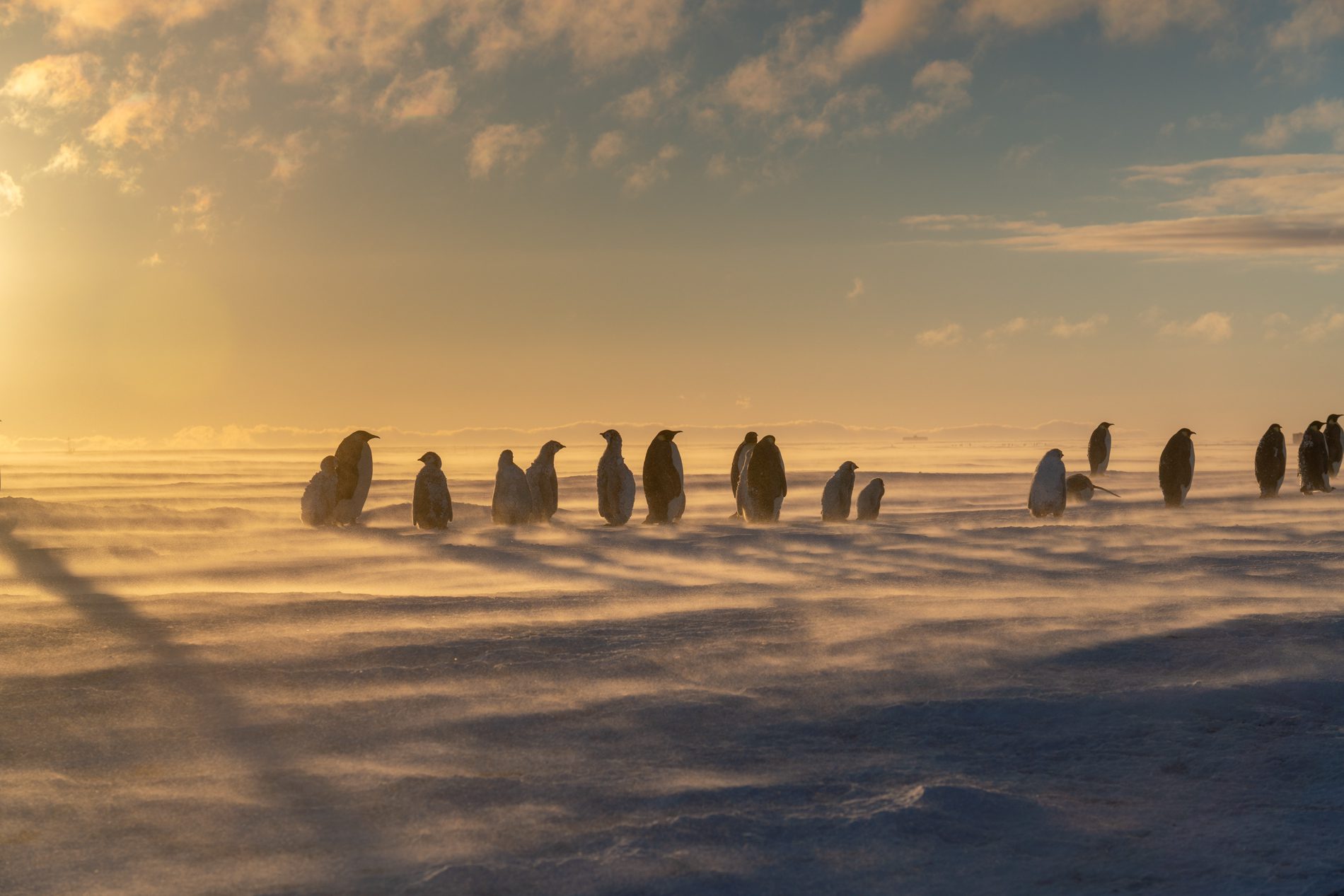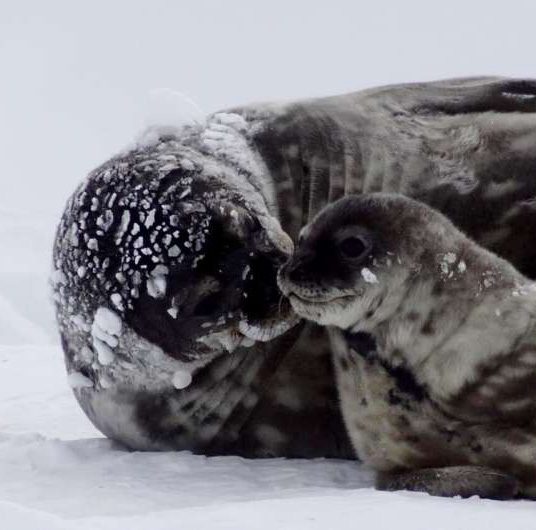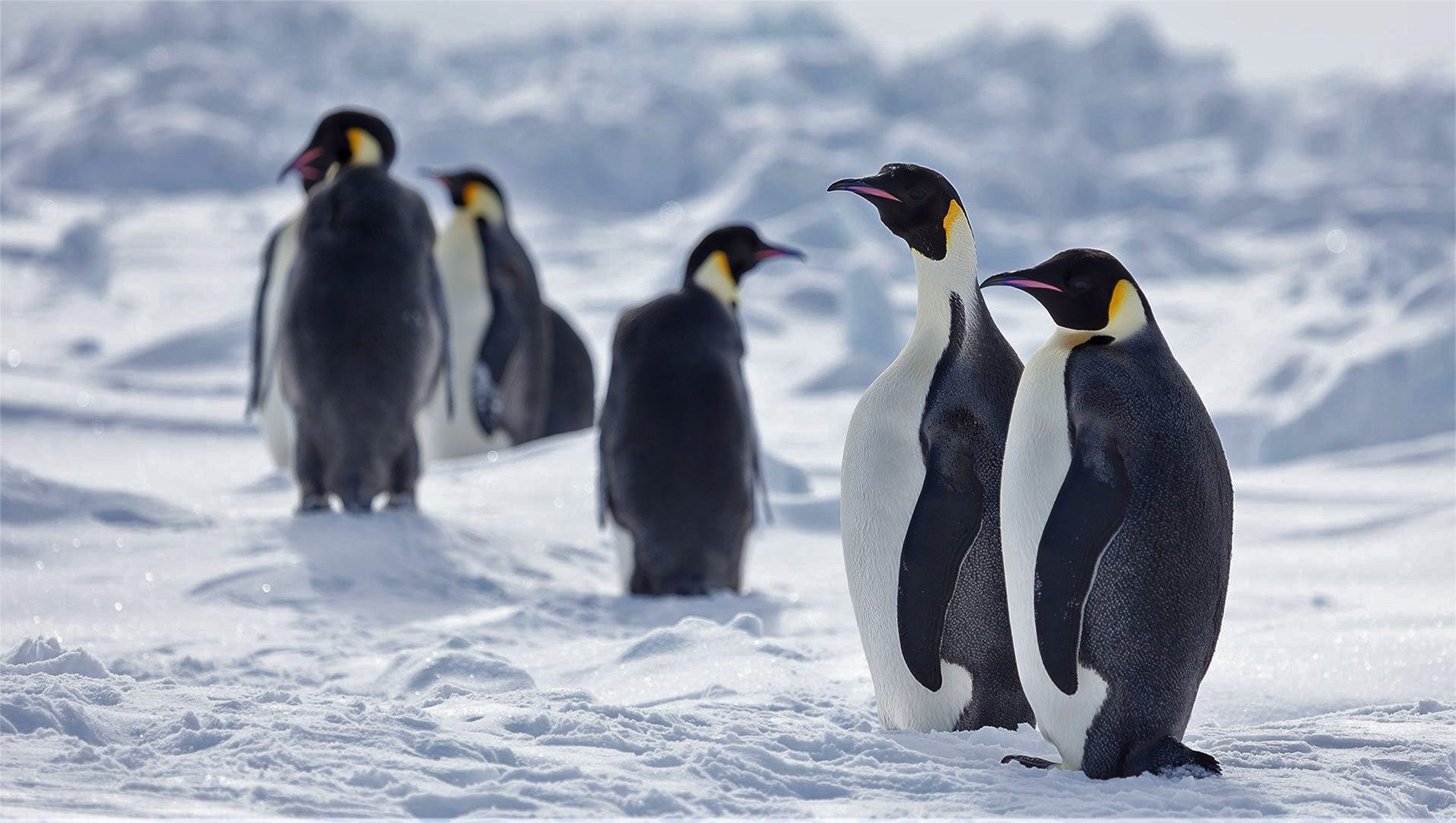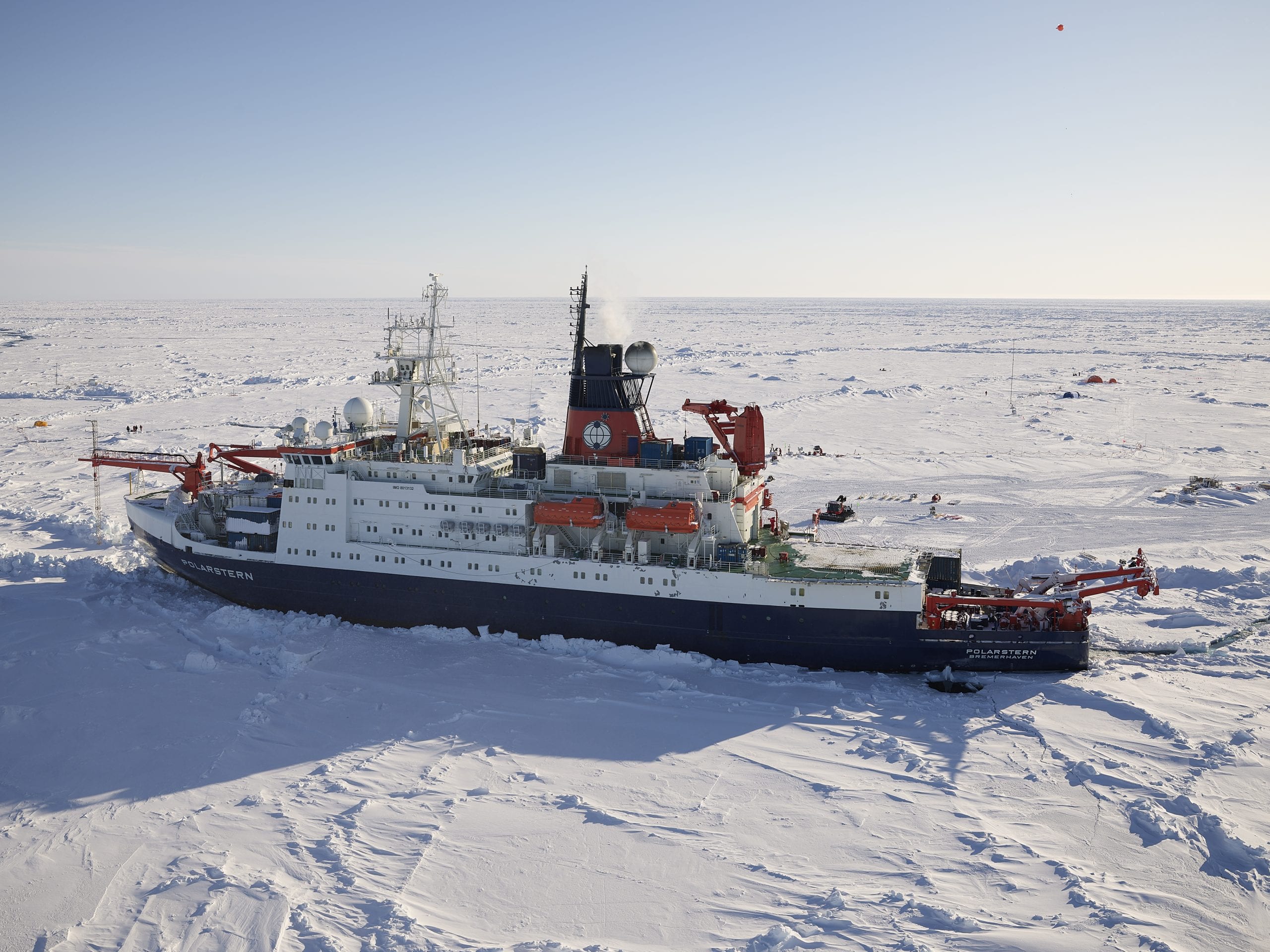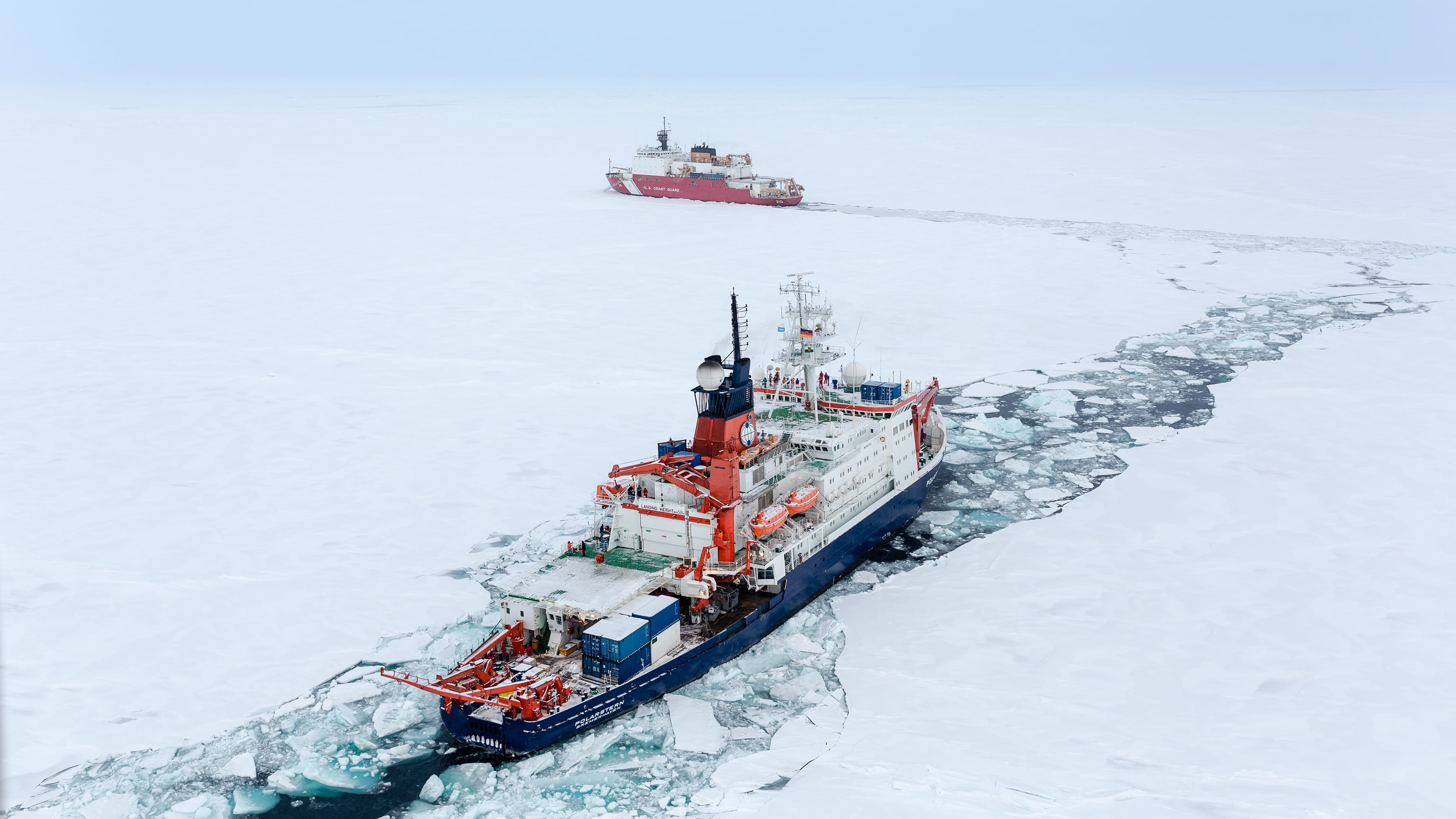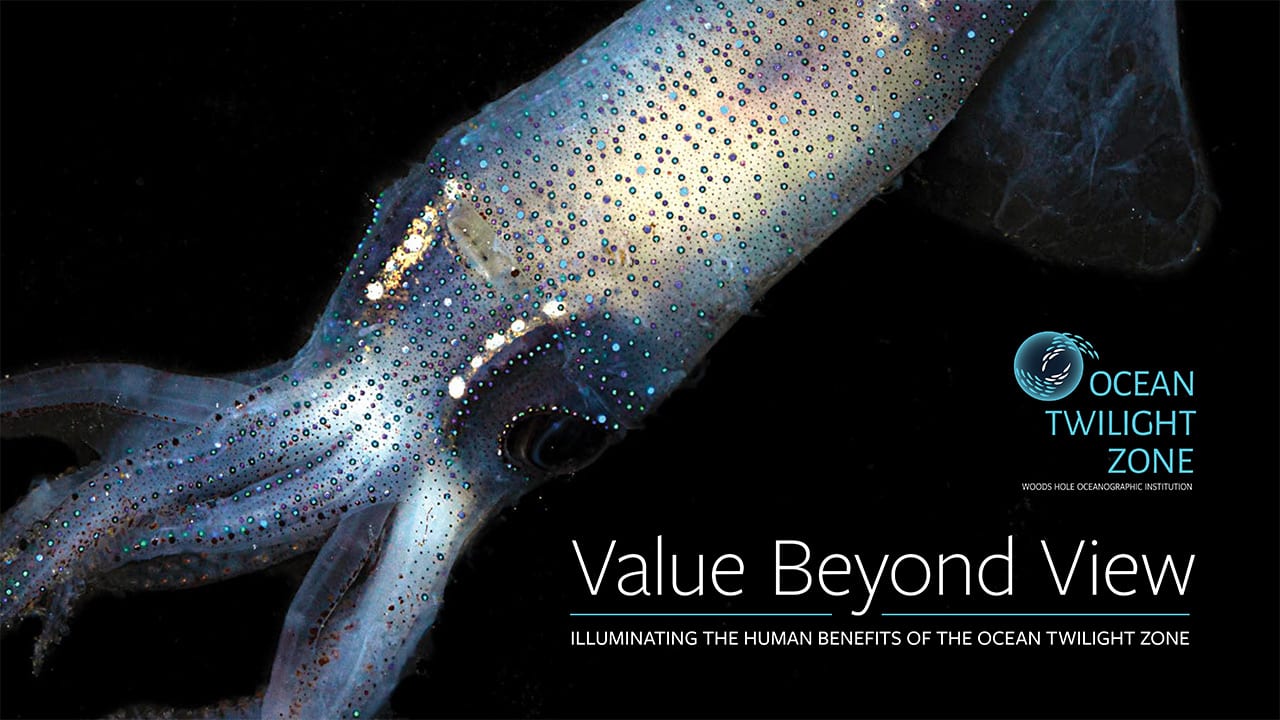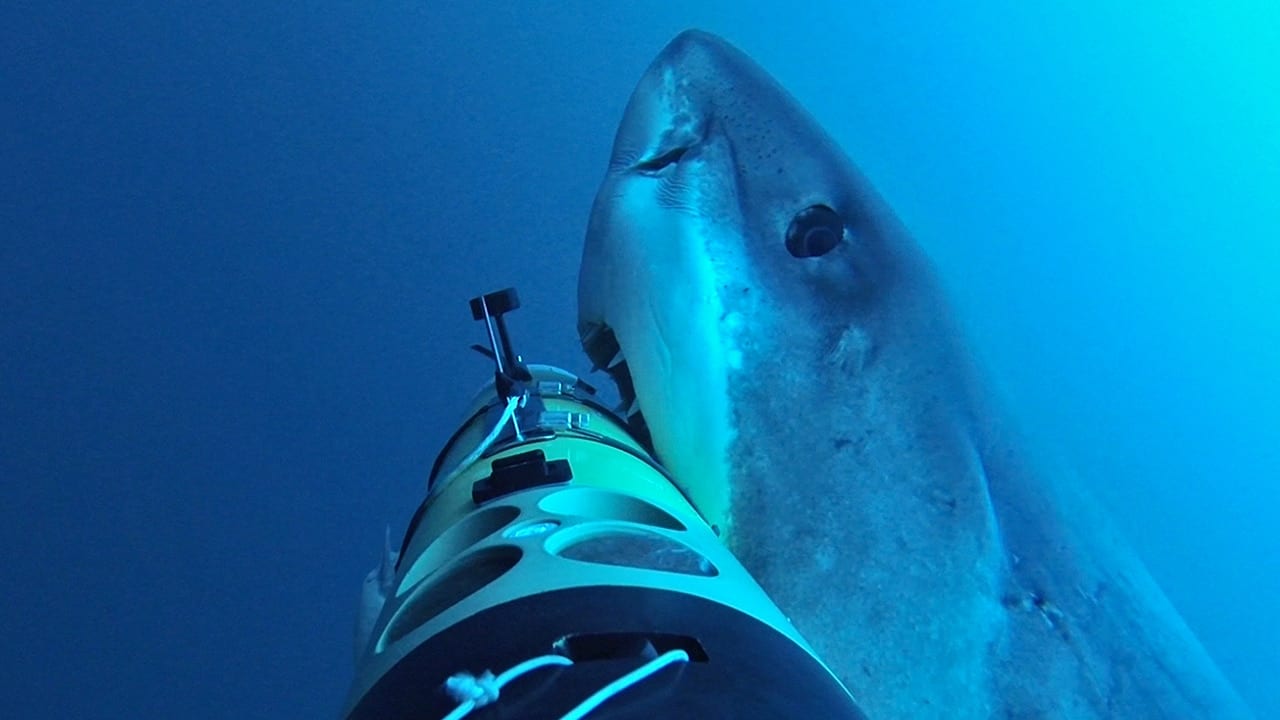News Releases
The Detection of a Massive Harmful Algal Bloom in the Arctic Prompts Real-Time Advisories to Western Alaskan Communities
The potent toxicity of the 2022 HAB event “posed an unprecedented risk to human and ecosystem health.”
Read MoreEmperor penguins granted protections under Endangered Species Act
Woods Hole Oceanographic Institution among research groups that offer key findings to support federal protection of species, increasingly under siege by climate change
Read MoreWeddell seal moms sacrifice to provide for their pups
Seal mothers dramatically limit diving and foraging while lactating to provide more iron to their young
Read MoreEmperor penguins, recommended as threatened species under Endangered Species Act
Today, the U.S. Fish and Wildlife Service (USFWS) announced a proposal to list the emperor penguin as a threatened species under the Endangered Species Act.
Read MoreEpic Arctic Mission Ends
An epic mission ended as the German icebreaker Polarstern returned home Oct. 12, 2020, after being frozen near the top of the world for nearly a year to study all aspects of the Arctic system.
Read MoreWHOI receives NOAA awards to study, predict harmful algal blooms
Projects will help enhance monitoring and determine socioeconomic impacts of blooms nationwide
Researchers at Woods Hole Oceanographic Institution (WHOI) were recently named in a list of 17 new research projects funded […]
Read MoreA rapidly changing Arctic
A new study by researchers at Woods Hole Oceanographic Institution (WHOI) and their international colleagues found that freshwater runoff from rivers and continental shelf sediments are bringing significant quantities of carbon and trace elements into parts of the Arctic Ocean via the Transpolar Drift—a major surface current that moves water from Siberia across the North Pole to the North Atlantic Ocean.
Read MoreReport reveals ‘unseen’ human benefits from ocean twilight zone
A new report from researchers at Woods Hole Oceanographic Institution (WHOI) reveals for the first time the unseen—and somewhat surprising—benefits that people receive from the ocean’s twilight zone. Also known as the “mesopelagic,” this is the ocean layer just beyond the sunlit surface.
Read MoreRobotic Vehicles Offer a New Tool in Study of Shark Behavior
The dramatic video footage of a great white shark attacking the “REMUS SharkCam” autonomous underwater vehicle (AUV) brought some of the highest ratings to Discover Channel’s Shark Week 2014 and went viral on the Internet.
But while the footage was unprecedented, the scientific understanding enabled by the REMUS SharkCam is just as groundbreaking. The AUV was used during a science expedition in 2013 to better understand white shark behavior and represents the first successful efforts to autonomously track and image any animal in the marine environment. The research provides critical data to efforts to conserve these animals.
“We wanted to test the REMUS SharkCam technology to prove that is was a viable tool for observing marine animals – sharks in this case – and to collect substantial data about the animals’s behavior and habitat,” said WHOI engineer Amy Kukulya, one of REMUS SharkCam’s principal investigators.
The research results were recently published in the Journal of Fish Biology. The paper’s lead author is Greg Skomal, a biologist with the Massachusetts Division of Marine Fisheries. In addition to Kukulya, co-authors include biologist E. M. Hoyos-Padilla of Pelagios-Kakunjá, a Mexican marine conservation organization, and WHOI engineer and REMUS SharkCam software developer Roger Stokey.
Read MoreShifting Winds, Ocean Currents Doubled Endangered Galapagos Penguin Population
New research suggests shifts in wind currents over the past three decades, possibly due to climate change and natural variability, have nudged the Equatorial Undercurrent north. The changing current expanded the nutrient-rich, cold water farther north along the coasts of the two islands, likely bolstering algae and fish numbers in the cold pool. This allowed the penguin population to double over the past 30 years, swelling to more than 1,000 birds by 2014, according to the new study.
Read MoreREMUS SharkCam Captures Upclose Encounters with Great Whites
When a team from the Woods Hole Oceanographic Institution (WHOI) took a specially equipped REMUS SharkCam underwater vehicle to Guadalupe Island in Mexico to film great white sharks in the wild, they captured more than they bargained for.
Read MoreSummer Shark Research Heats Up at WHOI
White shark tagging expedition sets sail (July 31), Discovery Channel Shark Week segment “The Return of Jaws” features WHOI’s REMUS technology (Aug. 5), and WHOI scientists and engineers share latest […]
Read MoreStudy Looks at Gray Seal Impact on Beach Water Quality
Scientists from the newly created Northwest Atlantic Seal Research Consortium (NASRC) are using data collected by the Massachusetts Department of Public Health (MDPH) to investigate whether seals may impact beach […]
Read MoreNew Research Consortium Brings Scientists, Fishermen, and Managers Together to Address Seal Issues in the Northeast
People come from miles away to see the seals off the shores of Cape Cod and surrounding regions, but the animals are creating some challenges for local fishermen. Recent increases […]
Read MoreSquid Studies Provide Valuable Insights Into Hearing Mechanisms
The ordinary squid, Loligo pealii?best known until now as a kind of floating buffet for just about any fish in the sea?may be on the verge of becoming a scientific superstar, providing clues about the origin and evolution of the sense of hearing.
Read MoreTeam finds subtropical waters flushing through Greenland fjord
Waters from warmer latitudes — or subtropical waters — are reaching Greenland’s glaciers, driving melting and likely triggering an acceleration of ice loss, reports a team of researchers led by […]
Read MoreEmperor Penguins March toward Extinction?
Popularized by the 2005 movie “March of the Penguins,” emperor penguins could be headed toward extinction in at least part of their range before the end of the century, according […]
Read MoreNew Marine Mammal Center Formed at Woods Hole Oceanographic Institution
The Woods Hole Oceanographic Institution (WHOI) has announced the formation of a new center for marine mammal research and conservation studies. The center combines scientific expertise, state-of-the-art facilities, and technological […]
Read MorePolar Bear Population Likely to Become Extinct
Within the month, the U.S. government must decide whether to list the polar bear as an endangered species. The question is: will such a declaration be too late because of […]
Read MoreBeaked Whales Perform Extreme Dives to Hunt Deepwater Prey
A study of ten beaked whales of two poorly understood species shows they dive much deeper and longer than reported for any other air-breathing species, a finding of particular interest since beaked whales stranded during naval sonar exercises have been reported to have symptoms of decompression sickness.
Read MoreEuropean Seal Plague May Threaten Population Survival
Scientists from G??teborg University in Sweden and the Woods Hole Oceanographic Institution (WHOI) report in an upcoming issue of the journal Ecology Letters that the 2002 outbreak of phocine distemper virus, or PDV, in European harbor seals may reduce the population by more than half and that future outbreaks with similar characteristics would significantly increase the risk of population declines. Their findings are the first epidemiological data reported on the 2002 outbreak, which is still underway, and may help predict the recurrence of the outbreaks and the impact on the long-term growth and survival of the European harbor seal population.
Read MoreWinter in Antarctica Waters: Biology in the Southern Ocean Focus of New International Research Program and Partnerships
As weather warms in New England and we dream of summer days, a team of Woods Hole Oceanographic Institution (WHOI) scientists has headed south to the frigid waters around Antarctica for the first of a series of international cruises to study the distribution and behavior of krill – the major food source for most animals in the Southern Ocean. The eight-member WHOI team is using a variety of new technologies including a remotely operated vehicle to study the small shrimp-like crustaceans that form the base of the food chain for whales, penguins, seals and other marine life.
Read More

